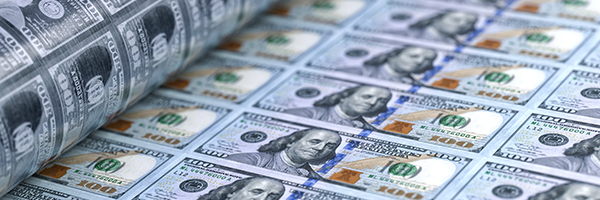
January 29, 2024 | Daily JAM, Morning Briefing |
Just days before the U.S. Treasury Department announces how much money it intends to borrow in the next quarter, the Treasury surprised traders by cutting its quarterly borrowing estimate to $760 billion. (Yeah, that would be a reduction from what had been expected.) The reduction fueled expectations on Wall Street that the Treasury would announce one last increase to its sales of long-term debt this week. That would be welcome relief after quarters when the size of Treasury auctions tested buyers’ appetites for government debt.

June 8, 2023 | Daily JAM, Morning Briefing |
A flood of Treasury bill, note, and bond sales will drive yields over the next few months as the U.S. Treasury rebuilds a cash account drawn down to the splinters at the bottom of the barrel during the debt ceiling crisis. On Tuesday, the U.S. Treasury clarified the schedule for auctions designed to refill those coffers. The timing, in my opinion, points to a July peak in Treasury yields. (And don’t forget that the Federal Reserve meets on July 26. Today, June 8, the financial markets are saying that there’s a 75.8% chance of either 25 or 50 basis points of interest rate increases at the conclusion of that meeting (some combination of rate increases at the June 14 and July 26 meetings) with odds at 49.9% of just 25 basis points of increased to the Fed’s benchmark rate, now at 5.00% to 5.25%, as a result of the two meetings. I’ve suggested buying the 2-year Treasury on that July peak.

May 3, 2020 | Daily JAM |
... Friday's report on job losses in the U.S. economy for April to be the big news of the week. The Labor Department’s April employment report is expected to show a 21 million jobs plunge in payrolls for the month. That's the biggest month drop since the start of...

March 2, 2018 | Daily JAM, Short Term, Volatility |
Do you think that in the fall out from President Trump’s announcement on Thursday of tariffs on imported steel (25%) and imported aluminum (10%) China’s Liu He, on a visit to Washington this week, might have reminded Treasury Secretary Mnuchin that the U.S. needs to sell somewhere around $1 trillion in new Treasury debt in 2018 to pay for things like the Tax Cuts and Jobs Act and that China, the prime target of those tariffs on steel and aluminum, is one of the globe’s largest holders and buyers of U.S. Treasuries?





